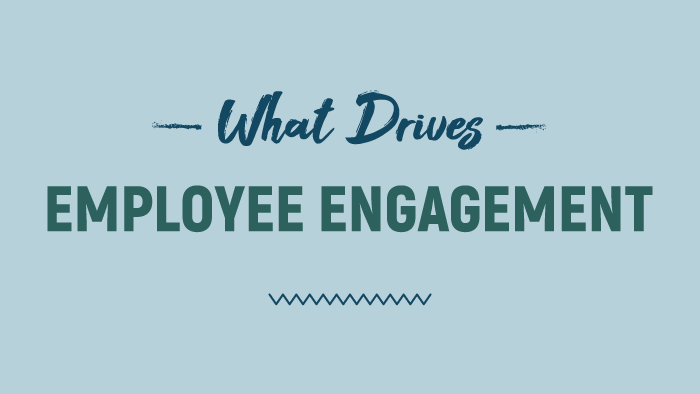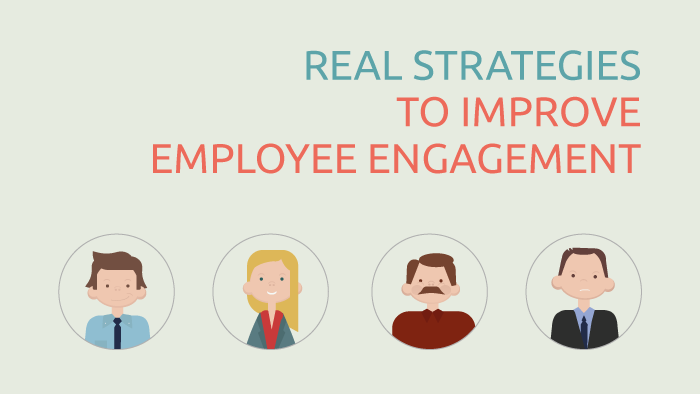
Employee engagement is a complex, difficult subject that can be hard to negotiate within the workplace, and even harder to improve.
Like any important topic, there’s a lot of information out there about employee engagement, but the truth is, most businesses are awful at engaging their employees. According to a Gallup study, only about 15% of the U.S. workforce is actively engaged.
Think about what that means in practical terms – imagine you work at a company with 200 employees, and they each work 40 hours a week. That means that while your company is getting 8,000 hours of work from your employees every week, only 1,200 of those hours are spent by engaged employees working to make your business effective and successful.
That puts quite a damper on your business goals!
The traditional advice surrounding employee engagement simply doesn’t work – that’s why for HR, getting creative is the most important strategy to improve employee engagement.
There isn’t a magic bullet that’s going to engage your employees overnight, but there are several practical strategies you can overlay to help improve engagement over time.
Here are several employee engagement ideas that actually work:
- Design your workspace to encourage collaboration
- Let employees who aren’t customer-facing meet clients
- Train managers to develop strong relationships with employees
- Have a scavenger hunt during onboarding
- Host clubs or committees based on interests or values
- Help employees develop emotional intelligence
- Clearly communicate your organization’s purpose (your “why”)
Read on to understand each of these tips in more detail.
Use Your Workspace to Encourage Engagement
The physical space your organization occupies sends a message to your employees – and, when used strategically, that message can subtly reinforce their levels of engagement.
Now, we’re not saying that you have to go all-out-millennial-indulgence in order to engage your employees, but consider how you can impact culture through the way you use your space.
Look at how this workplace encourages collaborative discussion:

Adding symbolic elements like these go a long way with helping your employees understand how you want them to behave in the workplace. Fostering engagement through your use of space is a powerful way to impact your culture.
Jeff Havens is a frequent blog contributor, podcast guest, and producer partner with BizLibrary, and he offered another way to use space to engage your employees: taking a field trip.
Havens told us:
“Drop everything and go to where your customers are using whatever product or service you’re selling to them. If that’s impossible, then consider inviting some of your customers into the office so that everyone (not just your front-line people) can meet them.
“Especially in jobs where the work itself is intangible, being able to physically see the people whose lives you’re impacting can be a powerful motivator.”
Focus on Fostering Engagement Through Relationships
It’s no secret that many employees leave bad bosses, not bad jobs.
But what’s lesser known is how turnover, and how your leadership, can affect employee engagement.
A 2015 SHRM study identified seven factors that all engaged employees had in common. Among these were relationships with coworkers, and relationships with their immediate supervisors.
Put simply, relationships at our jobs matter.
Poor leadership can have a multifaceted effect on employee engagement; when turnover is high, employees struggle to form meaningful, long-lasting relationships, and this effects engagement and motivation within the workplace.
The four-drive model of employee motivation tells us that the drive to bond is one of the four primary drives innate in each employee – failing to set up an environment where employees can form strong relationships with other employees and their supervisors is self-sabotage for your employee engagement efforts.
Luckily, creating environments and situations where employees can form relationships can be done, and with some creativity, can be a fun way to encourage engagement.
Here are some low-cost, effective, and creative strategies to develop relationships in your workplace!
Have a Scavenger Hunt
Here at BizLibrary, each employee offers up a fun fact for our onboarding scavenger hunts – some amongst us have auditioned for The Bachelor, some have exotic pets, some play musical instruments, etc. Each new hire goes around the office, searching for and having conversations with the people who own those facts.
This process helps new hires not only get comfortable with the layout of the office, but also provides a natural ice breaker and a reason to spark up a conversation with any and everyone.
Host Interest Clubs or Special Committees
Employees across departments may share similar interests and values, and empowering them to explore those interests together could yield stronger relationships. At BizLibrary, for instance, we have committees based on our values.
One committee oversees our Giving Back initiatives, another plans events to help employees live out our Enjoy the Journey value.
Ultimately, these committees exist not only to help us live out our cultural values, but also to build relationships with other employees who identify these values as important to them.
Develop Your Employees’ Emotional Intelligence
High levels of emotional intelligence, or EQ, aren’t just correlated with higher performance – they also help employees build strong relationships that last.
EQ can be broken into four components – self-awareness, self-management, social awareness, and relationship management.
While all of these components tie into relationship-building, relationship management is particularly vital.
The good news is that EQ can be learned and improved – if you don’t know where to start, check out this free ebook, “Practical EQ: A Handbook for Developing Your Emotional Intelligence.”
Building relationships in your company should be a key area of focus for your employee engagement efforts. With a concerted effort and a creative, thought-out strategy, you can begin to build stronger relationships and encourage employee engagement across your organization.
Refine and Communicate Your Organizational Values
The SHRM study we referenced earlier offers more factors than relationship-building – it also tells us that engaged employees find purpose in the work they do.
To optimize this factor, consider not only what impact your organization has on the world around it, but also how that impact is communicated to both consumers and to employees.
BARK, a company that offers subscription-based toy boxes for dogs, has a simple “why” statement that effectively demonstrates this meaning to employees:
“At BARK, we want to make dogs as happy as they make us.”
In a sentence, BARK effectively reminds employees why they do what they do – for people who buy into that message (a.k.a. dog people – the exact type of person BARK wants to hire), that reminder could have tremendous value for employee engagement efforts.
Our Best Tip for Improving Employee Engagement
Employee engagement is a multifaceted subject to tackle, and the interconnectivity of influences on engagement can make it difficult to decide where to start improving your employee engagement efforts.
One thing is clear from our research – doing nothing will get you nowhere.
Don’t let all the different tips and ideas out there paralyze you or make you continually look for a better strategy.
Just start.
Do something, whether it’s a simple happy hour to encourage team bonding or redesigning a shared space in your office. You’ll see benefits that will grow over time.
Because employee engagement is so complex, we spent a lot of time researching best practices and analyzing data to determine ideas that work, and we’ve put those findings into this free ebook.


